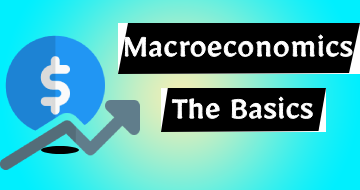IIRF Online > Finance & Accounting > Economics > Macroeconomics > Strategic Macroeconomics for Business & Investing
Strategic Macroeconomics for Business & Investing by Udemy
Managing Your Company and Personal Finances Over the Business and Financial Market Cycles
Course Highlights
- Learn the basic principles of macroeconomics from a strategic point of view
- Learn how to apply macroeconomics in your daily personal and business life
- Understand how to forecast and manage your company over the business cycle
- Understand how macroeconomic events affect stock, bond and financial markets
- Better manage your personal finances and economic choices
Skills you will learn!
Curriculum
7 Topics
An Overview of Modern Macroeconomics in 7 Modules: 58 Minutes
Lecture 1 Module 2: Macroeconomics in Your Business and Personal Lives
Lecture 1 Module 3: Microeconomics versus Macroeconomics
Lecture 1 Module 4: The Big Macroeconomic Issues Part One
Lecture 1 Module 5: The Big Macroeconomic Issues Part Two
Lecture 1 Module 6: Tax Trade Exchange Rate and Regulatory Policies
Lecture 1 Module 7: Forecasting the Business Cycle
9 Topics
Lesson Two Module 1: Introduction
Lesson Two Module 2: A Price or Income Adjustment Mechanism
Lesson Two Module 3: The Emergence of John Maynard Keynes
Lesson Two Module 4: Say's Law
Lesson Two Module 5: The Quantity Theory of Money
Lesson Two Module 6: The Aggregate Supply-Aggregate Demand Model
Lesson Two Module 7: Why the Aggregate Demand Curve Slopes Downward
Lesson Two Module 8: Why the Aggregate Demand Curve Shifts
Lesson Two Module 9: Shifts in the Aggregate Supply Curve
8 Topics
Lesson Three Module 1: Fiscal Policy & the Business Climate
Lesson Three Module 2: The Coming of John Maynard Keynes
Lesson Three Module 3: Analysis of the Keynesian Model Part One
Lesson Three Module 4: Analysis of the Keynesian Mode Part Two
Lesson Three Module 5: The Keynesian Expenditure Multiplier
Lesson Three Module 6: Closing Inflationary and Recessionary Gaps
Lesson Three Module 7: Closing an Inflationary Gap Tax Cuts vs. Govt. Spending
Lesson Three Module 8: The Keynesian Model Then and Now
10 Topics
Lesson Four Module 1: What is Monetary Policy?
Lesson Four Module 2: All About Interest Rates
Lesson Four Module 3: The Kinds and Functions of Money
Lesson Four Module 4: Determinants of Money Demand
Lesson Four Module 5: How Paper Money is Created and the Money Multiplier
Lesson Four Module 6: The Money Supply Multiplier & Where Money Comes From
Lesson Four Module 7: The Nuts and Bolts of Monetary Policy
Lesson Four Module 8: Monetary Policy to Close Recessionary & Inflationary Gaps
Lesson Four Module 9: Monetary Versus Fiscal Policy
Lesson Four Module 10: Monetary Policy & Strategic Business & Money Management
8 Topics
Lesson Five Module 1: Two Types of Inflation and the Keynesian Dilemma
Lesson Five Module 2: The Core Rate of Inflation and Inflationary Expectations
Lesson Five Module 3: The Phillips Curve and Inflationary Spirals
Lesson Five Module 4: Natural Unemployment Rate Monetarist View of Spirals
Lesson Five Module 5: Monetarist Keynesian Supply Side Inflation Cures
Lesson Five Module 6: New Classical Economics and Rational Expectations
Lesson Five Module 7: Three Ranges of the Economy
Lesson Five Module 8: Strategic Management of Inflation Risk
9 Topics
Lesson Six Module 1: Overview of the Four Wheels of Growth
Lesson Six Module 2: The Four Wheels of Growth in Detail
Lesson Six Module 3: Classical Growth Models of Adam Smith and Thomas Malthus
Lesson Six Module 4: Neoclassical Growth Model & Technological Change
Lesson Six Module 5: Growth in Developing Nations
Lesson Six Module 6: The Quantity and Quality of Human Resources
Lesson Six Module 7: The Blessing and Sometimes Curse of Natural Resources
Lesson Six Module 8: Importance of Capital Formation and Technological Change
Lesson Six Module 9: Development Strategies to Break the Vicious Cycle of Pover
9 Topics
Lesson 7 Module 1: An Introduction to the Business of International Trade
Lesson 7 Module 2: The Language and Jargon of International Trade
Lesson 7 Module 3: The Theory of Absolute Advantage
Lesson 7 Module 4: Why Comparative Advantage Trumps Absolute Advantage
Lesson 7 Module 5: A Production Possibilities Analysis of Comparative Advantage
Lesson 7 Module 6: The Economics and Politics of Protectionism Part One
Lesson 7 Module 7: The Economics and Politics of Protectionism Part Two
Lesson 7 Module 8: The Pros and Cons of Protectionism
Lesson 7 Module 9: Limitations of the Ricardian Free Trade Model & a Case Study
11 Topics
Lesson Eight Module 1: Introduction to Exchange Rates
Lesson Eight Module 2: Balance of Payments Accounting -- The Current Account
Lesson Eight Module 3: Balance of Payments Accounting -- The Capital Account
Lesson Eight Module 4: Exchange Rates Defined
Lesson Eight Module 5: Why Exchange Rates Move -- Part One
Lesson Eight Module 6: Why Exchange Rates Move -- Part Two
Lesson Eight Module 7: Floating vs. Fixed Rates & Gold Specie Flow Adjustment
Lecture 8 Module 8: Hume's Theory & the Gold Standard in the Real World
Lesson Eight Module 9: The Dollar Standard and Its Collapse
Lesson Eight Module 10: Today's Hybrid System Currency Blocs and Fixed Pegs
Lesson Eight Module 11: Global Spillover Effects of Fiscal & Monetary Policy
7 Topics
Lesson Nine Module 1: An Overview of the Macroeconomics of Public Finance
Lesson Nine Module 2: Accurately Measuring the Debt Burden
Lesson Nine Module 3: The Structural Versus Cyclical Budget Deficit
Lesson Nine Mod 4: Cyclical vs. Structural Deficit - Policies to Balance Budget
Lesson Nine Module 5: Three Ways to Finance Budget Deficits -- Part One
Lesson Nine Module 6: Three Ways to Finance Budget Deficits -- Part Two
Lesson Nine Module 7: The Pros and Cons of Budget Deficits
7 Topics
Lesson Ten Module 1: An Introduction to Strategic Business Cycle Management
Lesson Ten Module 2: A Simple Forecasting Model for Business Execs & Investors
Lesson Ten Module 3: The GDP Forecasting Model in Action
Lesson Ten Module 4: Strategic Marketing & Operations & Supply Chain Management
Lesson Ten Module 5: Strategic CAPEX Corporate Finance & Credit Management
Lesson Ten Module 6: Strategic Acquisitions & Divestitures and HR Management
Lesson Ten Module 7: Well Timed Investment Strategies Over the Business Cycle

Strategic Macroeconomics for Business & Investing











